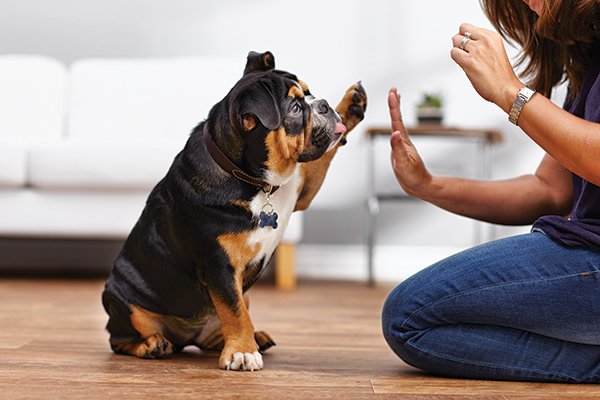Training a dog to obey commands is one of the most important exercises that any dog must undergo as long as it is decided that this dog is in the service of man, whether this dog was trained later to perform a certain work, or the dog was just a spoiled animal that accompanies man in his life – despite the reservation On this – regardless of the type, size or age of the dog, bearing in mind that every rule has an exception.
These exercises are not aimed at forcing the dog to perform movements that conquer or humiliate the will of the dog, or show movements such as what we see in the circus. Dealing with the modern civil life in which we live and fully adapting to it. If the dog does not adapt to this life, it will either harm itself or others due to irregular behavior. So what do we expect from a dog that lived its whole life freely in the countryside or in the wilderness or confined to an experiment laboratory if it is placed in the midst of contemporary life? And what will he do when he enters a house for the first time? Most likely he will urinate in every corner to mark his area of influence, and the whole place will be available to relieve himself, and will he sit on the chair, on the sofa, or on the bed? What will he play with a mobile phone, a shoe, or an electric cord? How will he deal with the first horn he hears? How will he play with his master? Does he jump on him, caress him, and lick his hand? And his clothes attract? What will the dog do when a human smiles at him for the first time? Does he understand the meaning of the smile? Or will he treat it as a sign of threat, and initiate an appropriate response from his point of view? And when we put a collar around his neck for the first time, how will he deal with it? And when we take him for a walk, will he try to hit the leash? Or will he constantly try to draw us forward, until he almost knocks us to the ground, or until he exhausts us from excessive push and pull? Will he feel fear and panic about pedestrians, cars, and the noise of the city in general, or will he take a hostile attitude to defend himself against the difficult situation in which he finds himself? And when he sees another dog, does he initiate the attack or run away, and what is his attitude toward other animals, such as the cat, for example? Will he try to hit the leash? Or will he constantly try to draw us forward, until he almost knocks us to the ground, or until he exhausts us from excessive push and pull? Will he feel fear and panic about pedestrians, cars, and the noise of the city in general, or will he take a hostile attitude to defend himself against the difficult situation in which he finds himself? And when he sees another dog, does he initiate the attack or run away, and what is his attitude toward other animals, such as the cat, for example? Will he try to hit the leash? Or will he constantly try to draw us forward, until he almost knocks us to the ground, or until he exhausts us from excessive push and pull? Will he feel fear and panic about pedestrians, cars, and the noise of the city in general, or will he take a hostile attitude to defend himself against the difficult situation in which he finds himself? And when he sees another dog, does he initiate the attack or run away, and what is his attitude toward other animals, such as the cat, for example?
After all this, will we blame the dog, which dealt with previous situations in a natural way, and did not care where to relieve itself? He urinated in every corner, and stood out on the sofa, and then he smeared our clothes with his feet, and he almost attacked us when we smiled at him and our teeth came out? Or will we blame ourselves for not trying to understand what a dog is? How does he think? How do we address him? How do we understand its language? And in the end, how do we qualify it to be a useful companion for us according to the data of modern civil life

